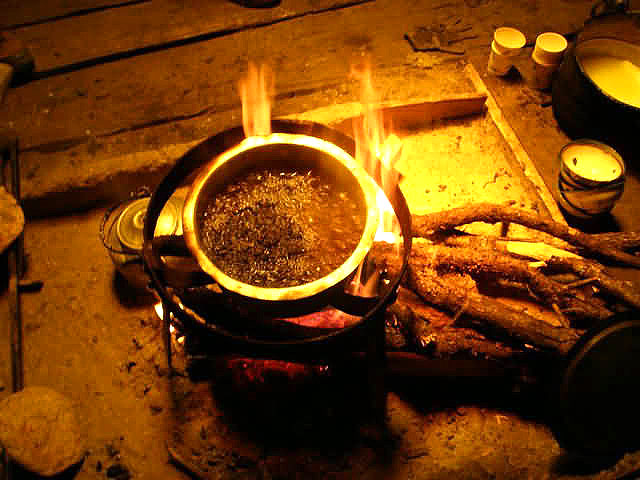Tea Culture in Tibet
Butter, milk, and salt are added to brewed tea and churned to form a hot drink called Po cha. The concoction is sometimes called cha su mar, mainly in Kham, or Eastern Tibet. Traditionally, the drink is made with a brick of domestic tea and dri's milk (a dri is the female counterpart to the male yak), then mixed in a churn for several minutes. Shaking or blending generic black tea with cow milk and butter also works well, although the unique taste of yak milk is difficult to replicate.
Tibet tea drinking has many rules. One such concerns a ritual performed by guests at another 's house. The host will first pour some highland barley wine. The guest must dip his finger in the wine and flick some away. This will be done three times to represent respect for the Buddha, Dharma, and Sangha. The cup will then be refilled two more times and on the last time it must be emptied or the host will be insulted. After this, the host will present a gift of butter wine to the guest, who will accept it without touching the rim of the bowl. The guest will then pour a glass for himself, and must finish the glass or be seen as rude. Tea drinking and its accompanying rules have a long and important history tied directly to respecting others. Therefore it is wise to ask advice from your tour guide about the proper etiquette for your specific situation.
Tibetan tea culture consists of two traditional tea types. These are butter tea and sweet milk tea, which are found only in Tibet. Tibetans enjoy other types of tea as well, such as boiled black tea. Many travelers heartily enjoy the peaceful environment of the local tea shops where they can relax and soak in the culture with an up close and personal experience.
 |
| Buttered tea is very popular in Tibetan family. |
Select Other Favorite Attractions
Guide for China tour, offers most value & amazing experience. In China, you can rely on us
Copyright © 2001 - 2025. All Rights Reserved to ChinaTourGuide.Com
Hotel Guangzhou | Guizhou Tours | Hong Kong Hotels | 香港酒店 | 广州酒店 | 广州会议酒店 | Indochina Tour
Guide for China tours, offers most value & amazing experience. Chinatourguide.com. Your reliable China tour agency.




